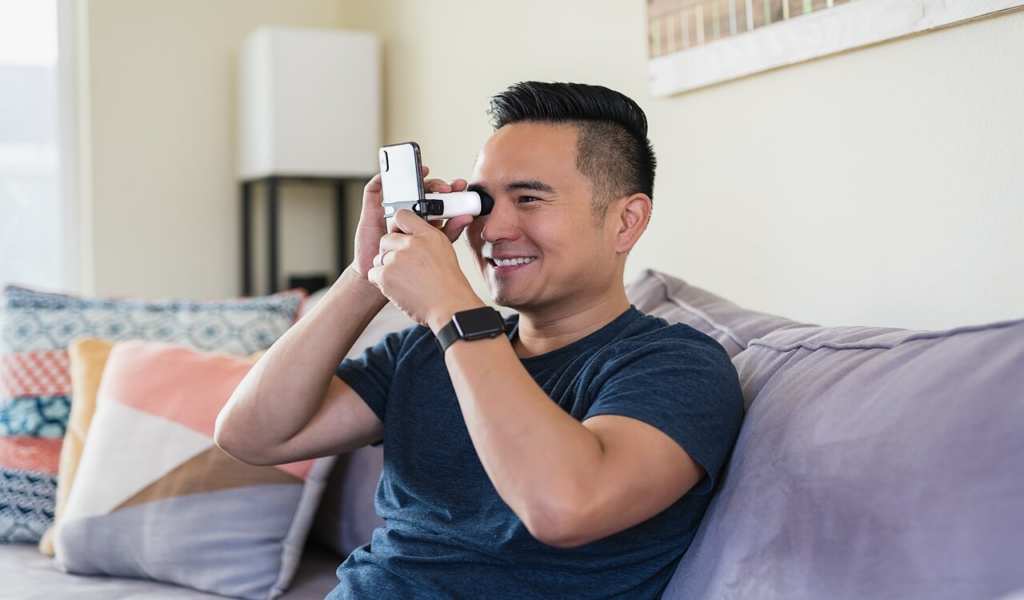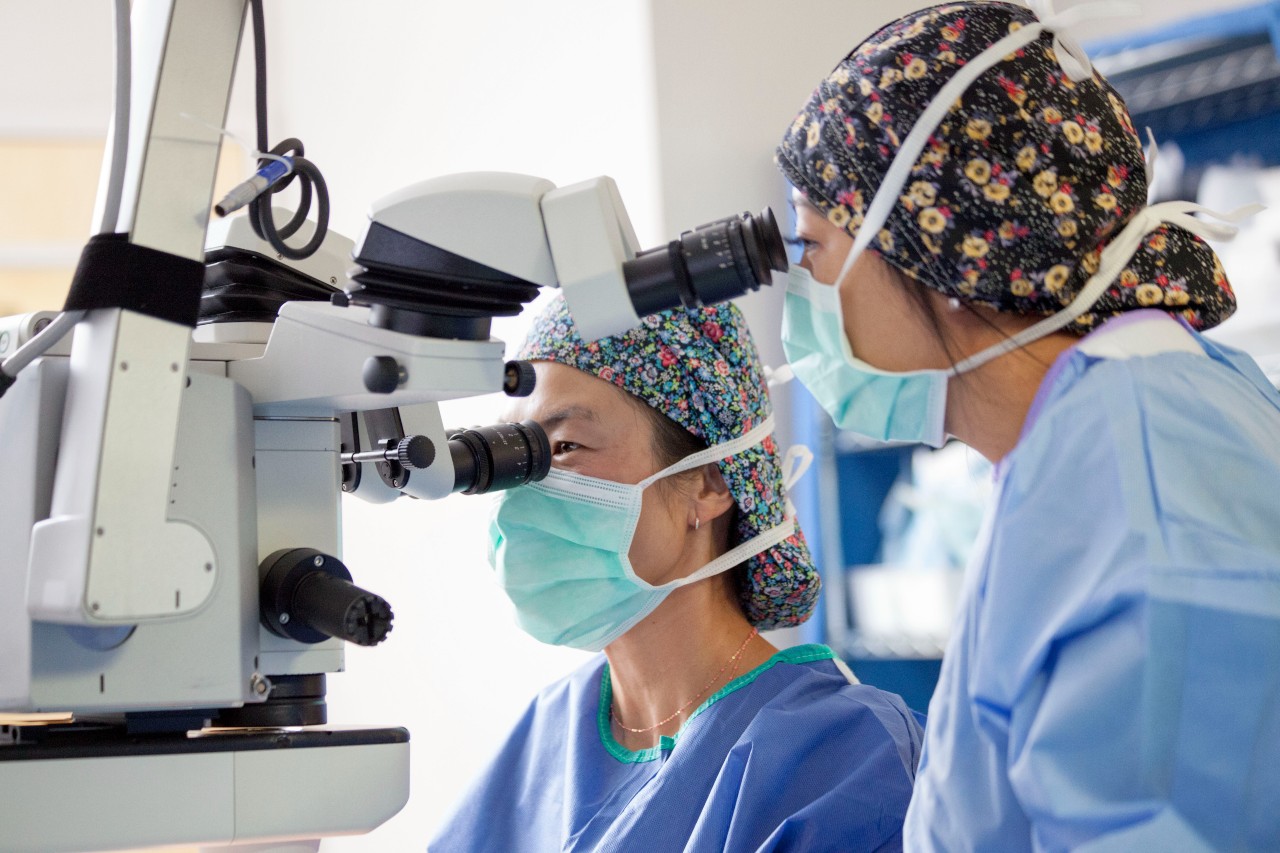According to our Sydney Eye Clinic specialist at Personal Eyes centre, the most common cause of blindness and severe vision loss in Australia is macular degeneration, often known as age-related macular degeneration or AMD. Progressive, painless loss of central vision or visual distortion is caused by a collection of degenerative illnesses of the retina (the light-sensitive tissue at the back of the eye) collectively known as AMD.
Because of this, one’s ability to read, drive, and recognise faces may be compromised. The disease can manifest in either a wet or dry form, but both are AMD.
Recent therapy options by Sydney Eye Clinic have revolutionised the management of AMD and our capacity to avoid blindness, but a solution remains elusive. Wet age-related macular degeneration (AMD) individuals, for instance, may benefit from eye (intravitreal) injections, which studies have shown can preserve and even improve vision.
Dry age-related macular degeneration (AMD) has no currently available treatment, however there are ongoing clinical trials examining the disease’s development and prospective remedies.
In Australia, macular degeneration is the major cause of blindness and severe visual impairment. Studies have consistently found that individuals who seek therapy early in the course of their illness have the greatest outcomes. This highlights the need of keeping a close eye on your macula.
See also: Sydney Eye Clinic: Eye Drop Misuse is Affecting the Sight of Many Australians

How to Recognize the Symptoms: Sydney Eye Clinic Specialist.
Vision distortion, where once straight lines become wavy or curved, and dark spots or empty areas in the centre of your vision are hallmarks of age-related macular degeneration. You may also find that you’re more sensitive to glare and light than usual, have trouble differentiating between colours, and have decreased night vision.
Quick and simple diagnosis
Screening for AMD is critical in allowing early intervention with therapy if necessary. Luckily, there is a simple technique to test yourself that you can perform right at home: the Amsler Grid. This easy check will let you know whether there have been any changes to your vision that might point to the development of AMD or a worsening of your current condition.
Every person over the age of 50 should take a few seconds out of their day to check the straight edge of a door or window with each eye to check for “bumps” or missing pieces. It is recommended that those with risk factors for AMD (such as a family history of macular degeneration and/or smoking) use the Amsler Grid.
Consultation with an expert
Get your eyes tested right away if you experience any of the symptoms of AMD or if you notice any changes in your vision after utilising the Amsler Grid. Although this grid might help you keep track of your eye health, it is still important to have a check-up with an eye doctor every year or two. Don’t just chalk up any visual problems to getting older; early diagnosis can save your eyesight.
The Consequences of Blindness
Loss of sight affects not just the person who has it, but also their loved ones and the community at large. A person’s independence, mobility, mental health, intellect, and mortality can all be called into question in the face of blindness or vision loss, which can be a scary and stressful experience.

Relative helplessness
An individual’s autonomy is drastically altered by the loss of sight. Challenges arise with even the most fundamental aspects of self-care, such as eating, dressing, washing, and using the restroom. Driving, shopping, cooking, and managing one’s finances are just some of the key everyday life tasks that are affected.
Research has revealed that while both self-care and instrumental ADLs can be difficult at times, the latter often presents more of a challenge.
This results in a reliance on others, be they loved ones or outside experts. People of advanced age who are visually impaired are more likely to require permanent residential care. According to the Australian Blue Mountains Eye Study, the likelihood of moving into a nursing home increases by 7% for every line of reduced visual acuity.
Impairment of Mobilization and Injury
Poor visual abilities include impaired central vision, decreased contrast sensitivity, narrowed peripheral vision, and impaired depth perception can make getting around a dangerous or unfamiliar situation difficult.
Multiple investigations have established a link between low eyesight and accidental tumbling. Fractures and other major injuries might result from this. Patients admitted to two different hospital networks in the United Kingdom were evaluated for hip fracture.
Cataracts (49%), macular degeneration (21%), and uncorrected refractive error (17%) accounted for the majority of those with visual impairment. These people typically resided in economically disadvantaged neighbourhoods and were less likely to be under the care of an eye care expert.
Depression, anxiety, and other mental health issues are more common in those with vision loss. When compared to people of the same age who suffer from other chronic health disorders including asthma, chronic bronchitis, heart disease, or hypertension, those who are visually impaired have considerably greater rates of depression and anxiety.
Cognition
The visually handicapped are more likely to experience and show more rapid progression of cognitive impairment. Whether this is a direct or indirect result of eye illness on mental function is unknown. Cognitive decline may be exacerbated in the visually handicapped by their inability to engage in mentally engaging activities like reading.
As a result of less visual stimulation, the brain undergoes a series of changes that may have an effect on how well it thinks. It is also possible that environmental, genetic, and medical factors all act on the eye and the brain at the same time, as proposed by the “shared cause” idea.
When investigating the link between vision and brainpower, it’s crucial to account for any confounding variables like lifestyle and socioeconomic background.
Mortality
It indicates that impaired eyesight contributes to both injury-related and overall death. Undoubtedly, those with low vision are more likely to trip and fall. However, a decline in the capacity to perform the instrumental activities of daily life is also associated with an increase in mortality.
Potential complicating variables include health issues, lifestyle choices, and socio-demographics.
Prevention
Blindness is a terrifying possibility, but thankfully 90% of cases may be avoided or treated.
There have been significant improvements in both the detection and treatment of eye diseases as a result of recent technological developments.
In particular, the improvement of methods to evaluate metabolic disorders of the eye may allow for diagnosis and therapy prior to structural change and, consequently, visual loss. Thanks to developments like this, we may keep believing that avoidable blindness can be eliminated entirely.
Lastly
If you are having any question or inquiry about how to have a correct vision, cataract surgery, Laser eye surgery, laser vision correction, diabetic retinopathy, franzco medical retina, minimally invasive glaucoma surgery, normally clear lens, vision loss, retinal conditions, short sightedness, – you should get in touch with us via our Personal Eyes website to book your free assessment today.
Consider the factors outlined in this blog post, weigh the pros and cons, and most importantly, consult with a Sydney cataract surgeon at Personal Eyes before making the final decision.

